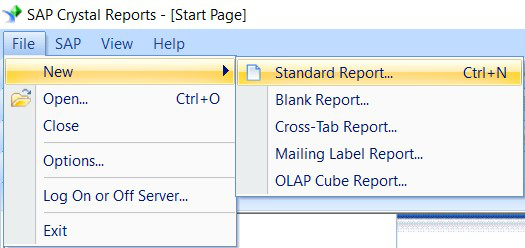Upload Crystal Report to Ms Crm 365
Use the Written report Wizard to blueprint a report based on up-to-appointment Dynamics CRM information.
Crystal Reports has many options for offloading information processing to remote data; this enables real-time reporting. With the support for JDBC in Crystal Reports, the CData JDBC Driver for Dynamics CRM brings this capability to Crystal Reports. This article shows how to create a report on Dynamics CRM data that refreshes when you run the report.
Deploy the JDBC Driver
Install the CData JDBC Driver for Dynamics CRM by including the driver JAR in the Crystal Reports classpath: Add the full file path, including the .jar, to the paths in the ClassPath element, nether the DataDriverCommonElement.
The CRConfig.xml is commonly located at C:\Program Files (x86)\SAP BusinessObjects\SAP BusinessObjects Enterprise 11 iv.0\java — the path might be slightly different based on your installation. The driver JAR is located in the lib subfolder of the installation directory.
Afterward you have added the JAR to the ClassPath, restart Crystal Reports.
Connect to Dynamics CRM Data
Later on deploying the JDBC Driver for Dynamics CRM, you tin can and so use the Report Sorcerer to add Dynamics CRM data to a new written report.
- Click File -> New -> Standard Report.
- Expand the JDBC node nether Create New Connection and double-click Brand a New Connexion.
-
In the sorcerer, enter the JDBC connection URL:
jdbc:dynamicscrm:User=myuseraccount;Countersign=mypassword;URL=https://myOrg.crm.dynamics.com/;CRM Version=CRM Online;The connection string options run into the authentication and connection requirements of dissimilar Dynamics CRM instances. To connect to your instance, gear up the User and Countersign properties, nether the Authentication section, to valid Dynamics CRM user credentials and fix the Url to a valid Dynamics CRM server organization root. Additionally, gear up the CRMVersion belongings to 'CRM2011+' or 'CRMOnline'. IFD configurations are supported equally well; set InternetFacingDeployment to truthful.
Additionally, y'all can provide the security token service (STS) or AD FS endpoint in the STSURL property. This value tin be retrieved with the GetSTSUrl stored procedure. Office 365 users can connect to the default STS URL by simply setting CRMVersion.
Built-in Connection Cord Designer
For help in constructing the JDBC URL, utilize the connexion string designer built into the Dynamics CRM JDBC Driver. Either double-click the JAR file or execute the jar file from the command-line.
coffee -jar cdata.jdbc.dynamicscrm.jarFill in the connection properties and copy the connection cord to the clipboard.

When yous configure the JDBC URL, you may as well want to set up the Max Rows connexion belongings. This volition limit the number of rows returned, which is especially helpful for improving performance when designing reports and visualizations.
-
Ready the driver class name:
cdata.jdbc.dynamicscrm.DynamicsCRMDriver -
Select the tables and fields needed in the written report. This example uses the FirstName and NumberOfEmployees columns from the Business relationship table.

You can then configure grouping, sorting, and summaries. For example, this commodity groups on FirstName and summarizes on NumberOfEmployees. See the following section to use the aggregate and summary to create a chart.
Create a Chart
After selecting a column to group by, the Standard Report Creation Wizard presents the pick to create a nautical chart. Follow the steps beneath to create a chart that aggregates the values in the FirstName column.
- In the Standard Report Creation Wizard, select the Bar Chart option and select the column yous grouped by, FirstName in this example, in the On Modify Of menu.
- In the Show Summary menu, select the summary you lot created.
- Select filters and a template, as needed, to finish the wizard.

Preview the finished report to view the chart, populated with your data. If you want to filter out zippo values, use a SelectionFormula.

Working with Remote Data
To ensure that you see updates to volatile information, click File and clear the "Relieve Information with Report" option. As you interact with the report, for case, drilling downward to hidden details, Crystal Reports executes SQL queries to recall the information needed to display the written report. To reload information you lot have already retrieved, refresh or rerun the report.
You can offload processing onto the driver by hiding details elements and enabling server-side grouping. To do this, you will need to have selected a column to group on in the report creation wizard.
- Click File -> Report Options and select the Perform Grouping On Server option.
- Click Study -> Section Expert and select the Details section of your report. Select the Hide (Drill-Down OK) choice.
When yous preview your report with the hidden details, Crystal Reports executes a Grouping BY query. When you double-click a column in the nautical chart to drill down to details, Crystal Reports executes a SELECT WHERE query that decreases load times by retrieving just the information needed, instead of the unabridged table.
corletteimsed1986.blogspot.com
Source: https://www.cdata.com/kb/tech/dynamicscrm-jdbc-crystalreports.rst


0 Response to "Upload Crystal Report to Ms Crm 365"
Post a Comment